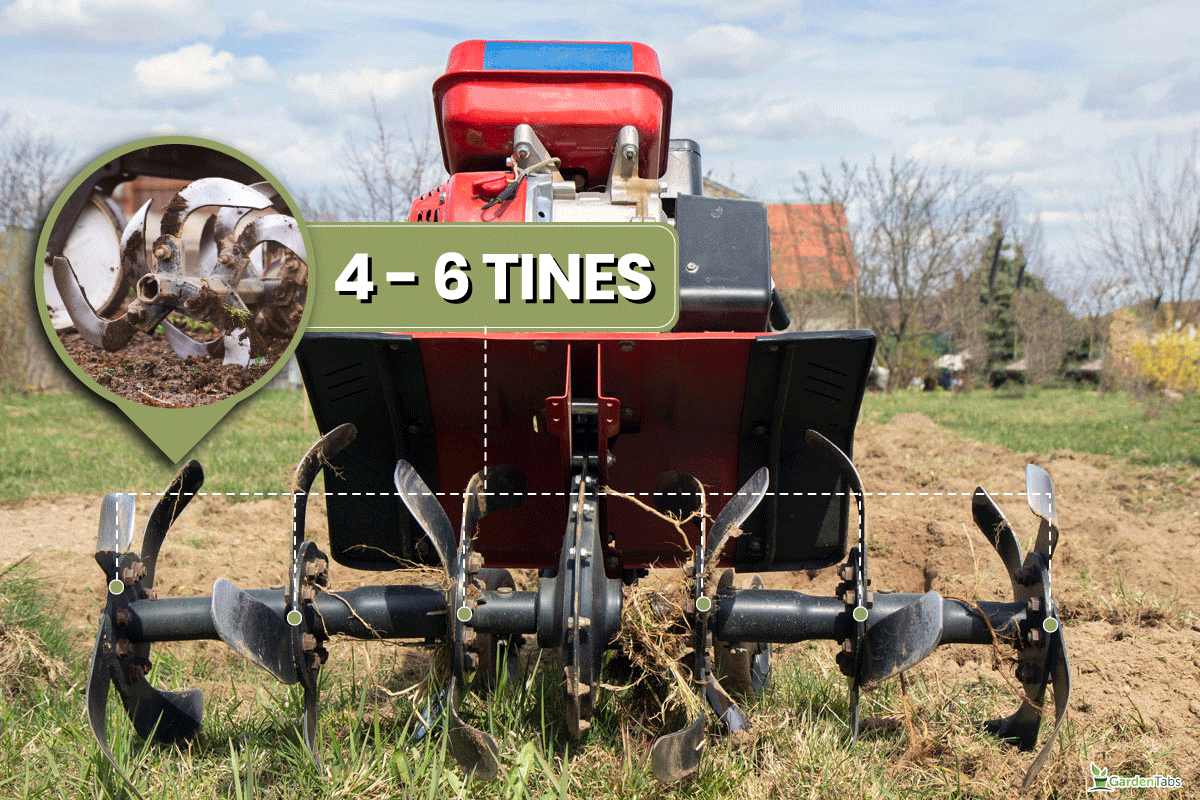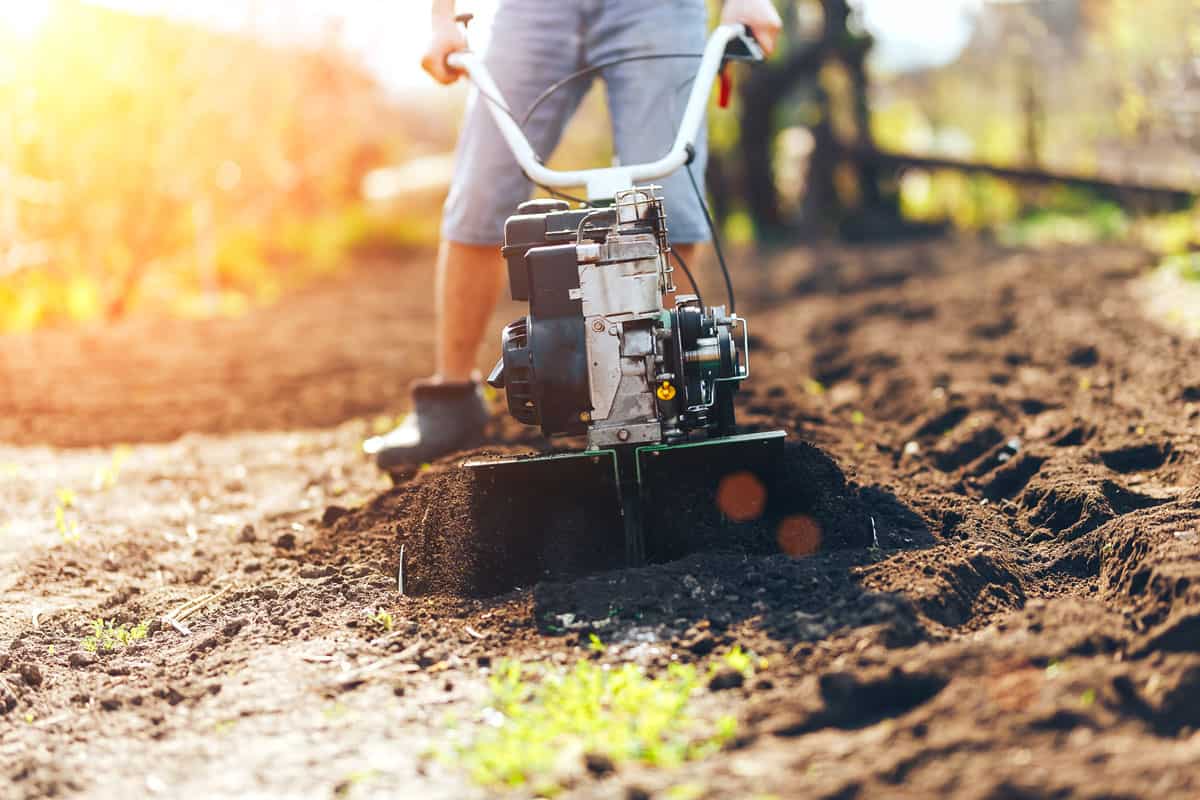You can conveniently plow your plot of land with a tractor and tiller. With various tiller sizes available, you want to know which fits your tractor best. We have gathered useful information to help you determine what size tiller is appropriate.
The tiller should be wider than the wheelbase of the tractor. Other than the width, you also evaluate the condition of the soil. The presence of rocks and clay soil will influence the size. Another factor is the tine and horsepower of the tractor. You will also need to decide if you need a forward or reverse tiller.
The tiller size should be appropriate for the tractor so you can dig up the soil well. You also maintain the efficiency and performance of the tractor with a suitable tiller. Read further to know how you can choose the right tiller size.
Tiller Size For Tractor

A rotary tiller is an attachment to a tractor. The equipment digs up the soil to prepare it for planting, landscaping, or farming. You create a suitable seedbed with the tractor by converting hard soil and making it finely grounded.
Different tiller sizes are appropriate for your tractor. The size depends on what you want to do with your lot. Small-scale projects like making furrows or annual beds will require a smaller size compared to yard landscaping.
The size of the tractor is another basis for the tiller size. Tractors vary in size, from small and mid-sized to heavy-duty.
As a general rule, you must choose a tiller that is wider than the wheelbase of your tractor. The size should be wider than the maximum width of the tractor. In that case, the soil will have no wheel tracks as the tiller passes.
You can use an offset tiller to fully cover one side of the track if you get a smaller tiller size.
See this offset tiller on Amazon.
Moreover, older tractors are commonly wide but don't feature high horsepower. Also, most subcompact tractors have a height of 4 feet, which is perfect for tough tilling and enough to cover the tractor's tire tracks.
Some prefer small tillers. Even if small, the tillers can create small gates which benefit the soil.
The tilling width will vary between manufacturers. John Deere has 42-81 inch wide tillers for their tractor units. Another brand, Land Pride, has a 74-inch tiller as its widest size, while LS Tractors' widest tiller size is 89 inches wide.
With varying sizes available, it will help if you know what factors to consider when selecting the tiller.
Check this tractor tiller on Amazon.
Factors To Consider When Choosing Tiller Size
There are several conditions affecting your choice of tiller size. Below are the factors to include in your decision-making:
- Garden size - The size mainly depends on the size of your garden lot. Small gardens that are 1,500 square feet and below can use mini tillers. Medium-sized gardens need mid-sized tillers. For gardens that are more than 5,000 square feet, you need a heavy-duty tiller.
- Use - The tiller size should be suitable for the intended use. When breaking heavy clay soil, you need large tillers. If you work with loam or sandy soil, medium-sized tillers are good. You can establish garden beds using small tillers.
- Ease of Use - Also, consider how you mobilize the tiller. You might have problems when turning or digging very hard soil. Consider the weight so you can easily till the soil using enough effort. You can minimize bouncing when working on hard soil with the right tiller size.
- Design - There are various designs for tillers based on tines, such as front, rear, or counter-rotating.
- Direction - The tillers also differ in direction. You must decide between a forward or reverse-rotating tiller. Your choice depends on the soil conditions. Forward tillers are suitable for existing gardens, while reverse tillers are for untilled, dry, and hard soils.
- Horsepower - The size is also dependent on the horsepower required for tilling. Bigger tillers require more horsepower than smaller sizes. Your choice will mainly depend on the purpose of tilling.
- Tilling depth - Tiller manufacturers indicate the tilling depth. The right depth is important to allow proper cultivation. Mini-tillers can dig up to 8 inches deep, while bigger tillers can create depths up to 3 feet.
- Tines - These are metal blades that dig up the soil. The common tines in tillers are 4 to 6. The higher the tines, the more horsepower required.
There is a lot to consider, but choosing the right tiller will benefit you for your gardening needs.

How Much Horsepower Does A Tiller Need?
Horsepower is the power your tiller engine needs. Like the tiller size, choosing the appropriate tiller horsepower for the tractor is crucial.
You must evaluate the size of your garden. The following are the garden and tiller sizes with corresponding horsepower requirements:
- Mini tillers (for less than 1,500 square feet) - less than 5 hp
- Medium tillers (for 1,500-5,00 square feet) - 5-6 hp
- Large tillers (for more than 5,000 square feet) - at least 6hp
The bigger size of tillers you have, the greater horsepower it needs.
How Many Tines Do You Need For A Tractor Tiller?

Besides the horsepower, you must also decide how many tines your tiller should have. The tines are the rotating metal blades on the flange of the rotor. The number of tines varies on the model of the tiller and power requirement.
Most tillers have 4 or 6 tines. If the tiller has more tines, it needs more horsepower to turn the soil. If you choose six tines, it requires 23% more horsepower.
Do You Go Forward Or Backwards With A Tiller?

The direction of most tillers follows how the tires turn. Commonly, tines move forward, yet there are tillers with reverse rotation.
Forward or front-tined tillers pull the machine forward by pushing the handles and raising the spinning tines. With this tiller direction, you can create well-aerated soils.
On the contrary, reverse-rotating tillers pull backward to dig deeper. Unlike the forward tiller, the tractor won't lunge forward. In this direction, the tiller aggressively breaks up compact and rocky soils. Choose a reverse tiller if you want to dig deep and create cleaner seedbeds.
How To Operate A Tractor With A Tiller?

After you have purchased the tiller, you can now use your tractor. The tiller attaches to the tractor's power take-off (PTO) shaft. Learn the steps to set up and use the tiller with the tractor as you read along.
Setting Up The Tiller
Follow the process below to prepare the tractor before use:
- Attach the tiller by hooking it to the three-point hitch system at the tractor's rear. Connect the top and bottom link arms to the hitches.
- Then, securely attach the tiller with the lynchpin. Hook up stabilizers for the bottom link arms to prevent swinging.
- Add oil to the gearbox and grease the PTO shaft, especially for first-time use.
- Adjust the skids of the tiller to achieve the desired depth when digging with the tractor. You can do so by adjusting the bolts.
- Also, adjust the tailgate to control the consistency of the soil. A lower tailgate can create finer soil.
- Inspect the tiller afterward to see if all connections are secure.
Using The Tractor
Tractors have model-specific operation instructions, so it is best to refer to the manual. You can also follow the steps below:
- Sit on the tractor seat.
- Engage the parking brake.
- Disengage the PTOs before starting the engine.
- Turn on the engine. Starting the engine may vary for tractor models. Some will require a key before pushing a button.
- After starting the engine, release the parking brake.
- You can start moving by controlling the tractor movement with the foot pedals. Press the foot pedal to accelerate.
You can also ask the tractor company to demonstrate how to use the tractor.
In Summary
The width of the tiller should be wider than the tractor's wheelbase so the tiller can cover the tire marks as it moves along the tracks. If you bought a smaller tiller, there is an offset tiller to fully cover up one side of the track.
Also, there are factors to consider when choosing the right tiller size. The tiller must be suitable for your garden size and intended use.
Other things to consider are horsepower requirements, the number of tines, and tiller direction. After considering all the factors, choose the appropriate tiller size to prepare your garden.
Read related posts here:


